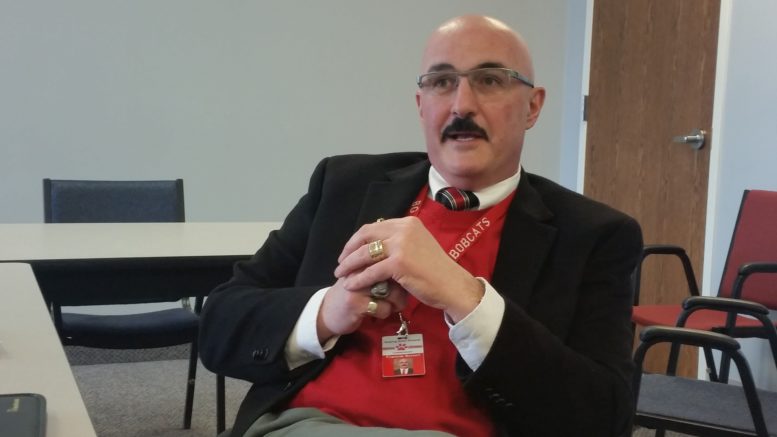By JAN LARSON McLAUGHLIN
BG Independent News
The state has weighed in on Bowling Green City School buildings – now it’s time for local citizens to do the same.
Bowling Green Superintendent Francis Scruci just received the Ohio Facilities Construction Commission’s report at 9:30 this morning, so he hadn’t had time to fully digest its contents. However, it was already very clear to him that Bowling Green residents have some decisions to make.
To start that process, the first of several community focus groups will meet March 14 at 6:30 p.m., in the middle school library. Scruci plans to roll out the facilities report and ask citizens how they would like to solve building issues identified in the report.
“We need to have a conversation with our community to find out what they want and what they will support,” he said.
Scruci estimated the public input process would take about a year. At that point, if the public supports it, the district may proceed with a bond issue to finance some type of construction.
“I don’t want to be reckless and put something on our ballot,” if the community doesn’t want it, he said.
The options are numerous and involve maintaining buildings as they are, renovating or building new.
But in the meantime, the school district cannot wait to deal with overcrowding issues at Conneaut Elementary. The school is already at capacity and anticipating a larger kindergarten class due to a change in the eligibility dates for beginning students.
“We are out of space,” Scruci said.
So the district plans to lease a modular unit for its fifth grade classrooms starting this fall. The unit will be placed off the cafeteria area of the school.
“It’s a temporary solution,” he said.
The facilities report from the state identified Conneaut as the building with the greatest needs, recommending that it may be more cost effective to demolish it and build new, rather than renovate, Scruci said. The report estimated it would cost $10 million to renovate the building, as opposed to $13 million to build new.
To rate school buildings, the OFCC scores 22 structural and technological criteria. The renovation and replacement costs are then based on meeting those standards.
The facilities report estimates it would cost $25 million to renovate the high school, and between $38-$40 million to replace it.
Scruci said it probably would not be worth it for the district to co-fund construction projects with the state. Based on a formula using local property values, the district would get only 10 to 14 cents per $1 for construction costs.
“On paper we look different than what we actually are,” Scruci said, listing the farmland value and college student population as items that skew the numbers.
If the district were to accept the state funding, it would be constrained by state rules. “It probably isn’t worth playing by their rules. You lose the local control,” he said. “I can tell you, my recommendation to the board isn’t going to be to enter into that.”
The report also predicts an increase in district enrollment by 150 to 175 students in the next 10 years. Scruci estimates that number to be even greater.
“I can see our populations growing a little more than what they are projecting,” he said.
Next month’s public meeting will be the first of many, according to the superintendent.
“We need to know what the community wants, what they think,” he said.
The meetings will also be an opportunity for the public to see inside the schools and hear from the students and teachers.
“Those buildings look great” from the street, he said. “But our students can tell the story. Our teachers can tell the story.”
One particular problem is the lack of air conditioning at the high school, Kenwood and Conneaut elementaries.
“It’s not conducive to learning,” Scruci said.
Proper facilities are key to delivering quality educations, he added.
“I don’t believe people are against schools,” he said. So the district just needs to find out what the community wants and how it can be made affordable.
“These are the real conversations that have been lacking in school districts throughout the state,” Scruci said.

